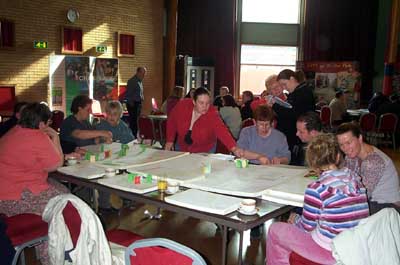
As community associations mature, there comes a time when the long-term direction of the community needs to be addressed by the Board of Directors. Time constraints of the volunteers and economic constraints of the budget can be impediments to the development of a long-term community plan. However, development of the plan is paramount in establishing the direction of an aging community and will provide focus to the existing and future boards of directors. Developing the plan itself can sometimes be difficult, however, without knowing where to begin the process.
The first step is to prepare a broad outline of the areas that should be included in any plan. Successful long-range plans include organizational, communications, facilities, community activities, operations, legal, and financial issues. It is a comprehensive undertaking.
The second step is to ask the community leadership to provide specific written input into the items they wish to focus on in each of these seven topics. You may be somewhat surprised in the comments that will come out of such an exercise.
The typical input from the community leadership on each of the overall topics revolves around the following:
- Organizational: Board member attitudes, conduct of meetings/work sessions, resident participation, defining the committee structure, preparation of terms of reference, committee member participation process, development of orientation manual, and board liaison to the committees. The purpose of establishing the organizational structure is to insure that the decision making process is efficient and timely.
- Communications: Communications can be broken down into internal communications (within the community) and external communications (outside the community). Typical comments on internal communication include Board to Owner (town meetings); Board to Committees (Annual Orientations); Board to Management; newsletters; web sites; welcome package; community directory; resident surveys; bulletin boards and closed circuit TV. External communications focus on development of policies dealing with the local media; participation in local government as it relates to community issues, and establishing relationships with neighboring communities.
- Facilities: This topic is usually the easiest one when identifying issues, but the most difficult one because of cost. Curb appeal and maintaining the physical plant of any community is the major duty of the board of directors of an association. Development of the list of community improvements, additions and alterations, especially with older by-laws, can be an enormous task. Older by-law provisions, for example, typically did not take into consideration advances in technology.
- Community Activities: These topics are important in creating a sense of community. Typical issues to address are volunteer appreciation functions; developing a list of special interest groups; establishing a welcome to the community program and volunteer community help programs.
- Operations: Topics included in this discussion are the handling of action items; inventory; personnel; contracting procedures; staff training (or volunteer training in self managed communities); annual calendar updates and computerization.
- Legal: Topics include by-law revisions; book of resolutions; personnel handbook; delinquency policy; community rules and enforcement processes.
- Financial: Topics include establishing a budget process to implement the long range plan; establishing a reserve funding plan; financial reporting requirements and investment policy.

With the input provided by individual volunteers, you can now begin the process of establishing the detailed agenda of a long-range planning meeting. Successful meetings are often handled by an independent facilitator whose responsibilities are to insure that all items on the agenda are discussed, that all participants have the opportunity to enter into the discussion, and that no one individual dominates the discussion.
Attendance at the initial planning meeting should be limited to Board members, management (unless the community is self managed) and committee chairs.
The meeting should prioritize (1, 2 or 3) the issues, establish a time frame by year (1st year through 5th year) when the issue will be on the agenda, assign the responsible party to initiate the idea (Board, committee or management) and, finally, determine when the issue will be implemented. Each topic should be discussed on the basis of identifying why an action is required and what resources are necessary to accomplish it.
After the meeting, the plan should be put in writing identifying the task, the initiating party, starting date and completion date. The board of directors should formally adopt the plan at a board meeting and indicate that the board will revisit the plan annually and make adjustments as appropriate. Once adopted, the plan should become a living document for future Boards.
Communicating the long-range plan to the community and periodic reporting of the results is essential in assuring community support for the future direction and goals of the community.
Happy planning!
 Print
Print Email
Email







